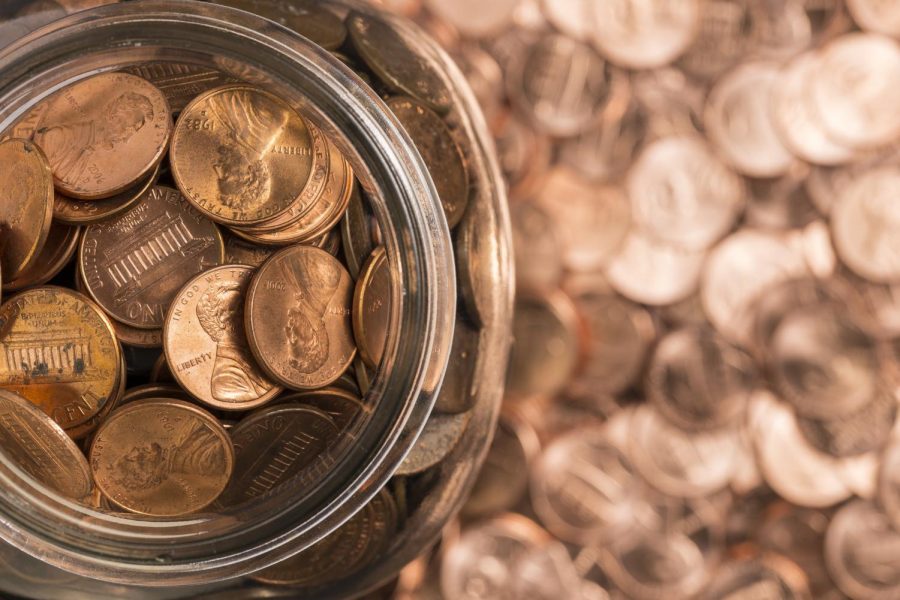Look Both Ways: Is it time to ditch the penny?
Getty Images
A bird’s eye view of a jar overflowing with pennies. Columnists Lucy Atkinson and Emily Beebe debate whether America should keep the copper coin in the currency.
April 26, 2023
We Should Keep the Penny in U.S. Currency
By: Emily Beebe
The penny may be one of the smallest denominations in the United States currency system, but it certainly has a large impact. There has been a debate raging for years about whether or not the penny should be removed from circulation. While there are some individuals who think that the penny is an unnecessary part of our coin system, it is vital to U.S. currency.
The penny represents an important part of our country’s heritage. According to the United States Mint, the penny was first issued in 1793. It has been a part of our currency system for over two centuries and has therefore become a symbol of our nation’s history. When we remove the penny from circulation, we are essentially erasing a part of our heritage – something that should never be done lightly.
Keeping the penny is a matter of practicality. While some people may argue the penny is not worth the effort of tracking and handling the coin, the reality is pennies are still used in transactions every day.
For example, if a customer makes a purchase and the total comes to $9.98, exact change may be given using two pennies.
According to The New York Times, removing the penny from circulation could make it more difficult for consumers to pay exact amounts, which could result in rounding up and an increase in the cost of goods and services.
In addition, the penny plays an important role in charitable fundraising efforts. Many non-profit organizations such as Salvation Army and Change for Change encourage supporters to donate their spare change, including pennies.
Although pennies may seem insignificant, over time they can add up to a substantial amount of money that can be used to support important causes.
We Should Cease the Production of the U.S. Penny
By: Lucy Atkinson
Pennies are perfectly adorable. However, neither the cute nostalgia of their past nor the shimmery appeal of their copper is enough to outweigh the inefficiency of penny production.
For every penny that is produced in 2022, the U.S. spent 2.72 cents, according to CoinNews. The penny, of course, is only worth 1 cent.
While keeping or tossing the penny is far from our nation’s most pressing debate, the United States struggles with overspending. Getting rid of the penny would be a harmless way of putting an extra jingle in the national treasury’s pocket.
Today, proponents of keeping the penny often argue that with the 1 cent gone, consumers will suffer higher prices.
Offering prices that end in “.99” is a common practice utilized by American businesses, thus some fear that without the penny companies will raise the price of their .99 items to the next dollar.
However, what many don’t realize is that the “.99” practice is an intentionally deceptive trick working to convince consumers to spend extra money.
As consumers, we don’t like to give up anything, especially our money. When we see “.99” items, our eyes and minds are drawn not to the cents fraction of the price, but to the dollar.
There’s a big difference between the way we perceive $9 and $10, and so $9.99 feels like a much more appealing price than $10, even if that difference is only 1 cent.
We buy the $9.99 item and leave feeling content, even if we wouldn’t normally pay $10 for the same item.
Furthermore, it’s important to recognize that the penny is just 1 cent. While a penny may have bought grandpa two peppermint sticks and a lollipop back in the ‘40s, it won’t do much for you today.
Ceasing the production of pennies would also not mean they vanish immediately. The Federal Reserve Bank of New York estimates there are more than 114 billion pennies currently in circulation in the United States.
Besides, if penny production ceased, wouldn’t finding and picking one up be that much more lucky?







